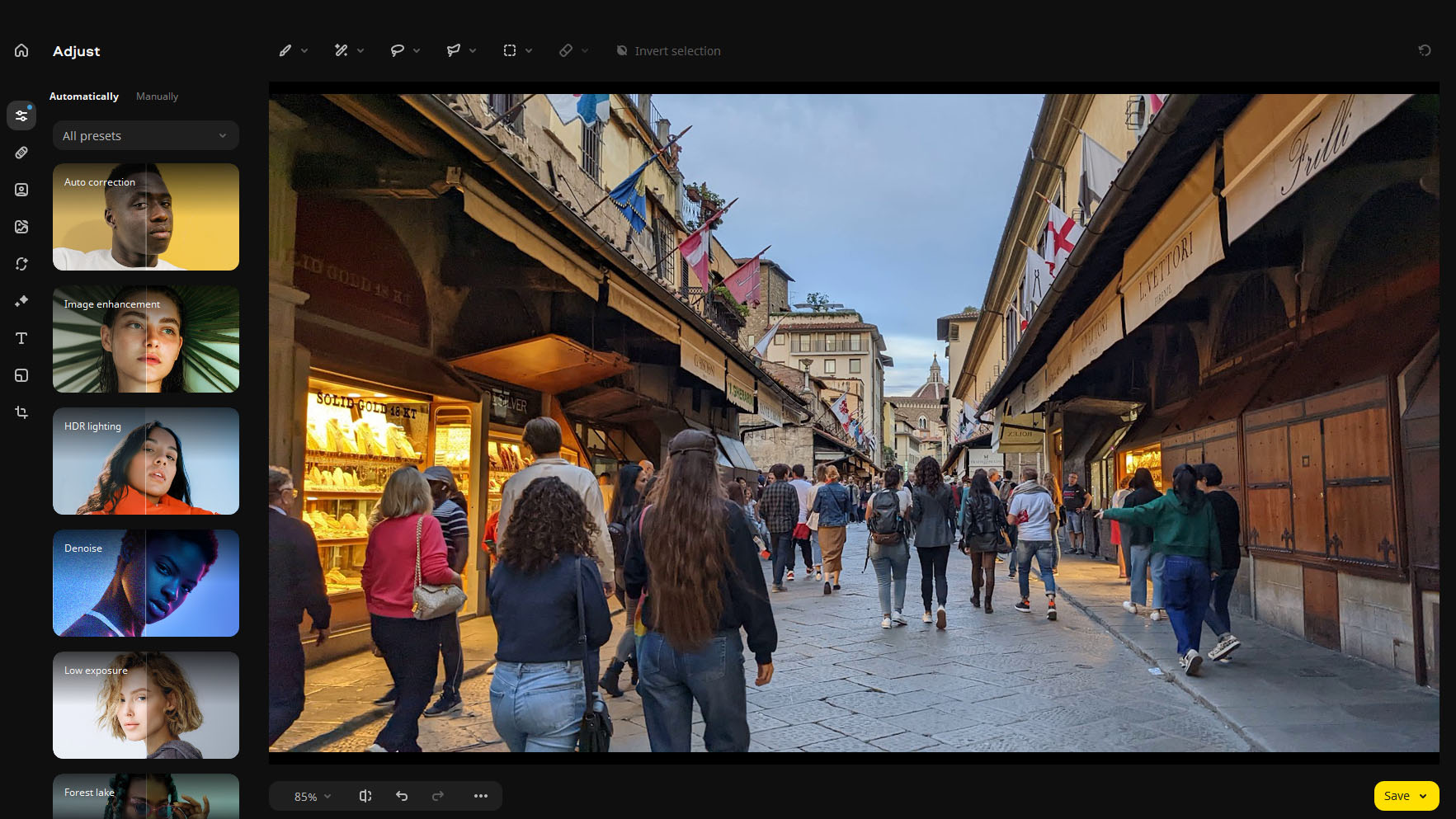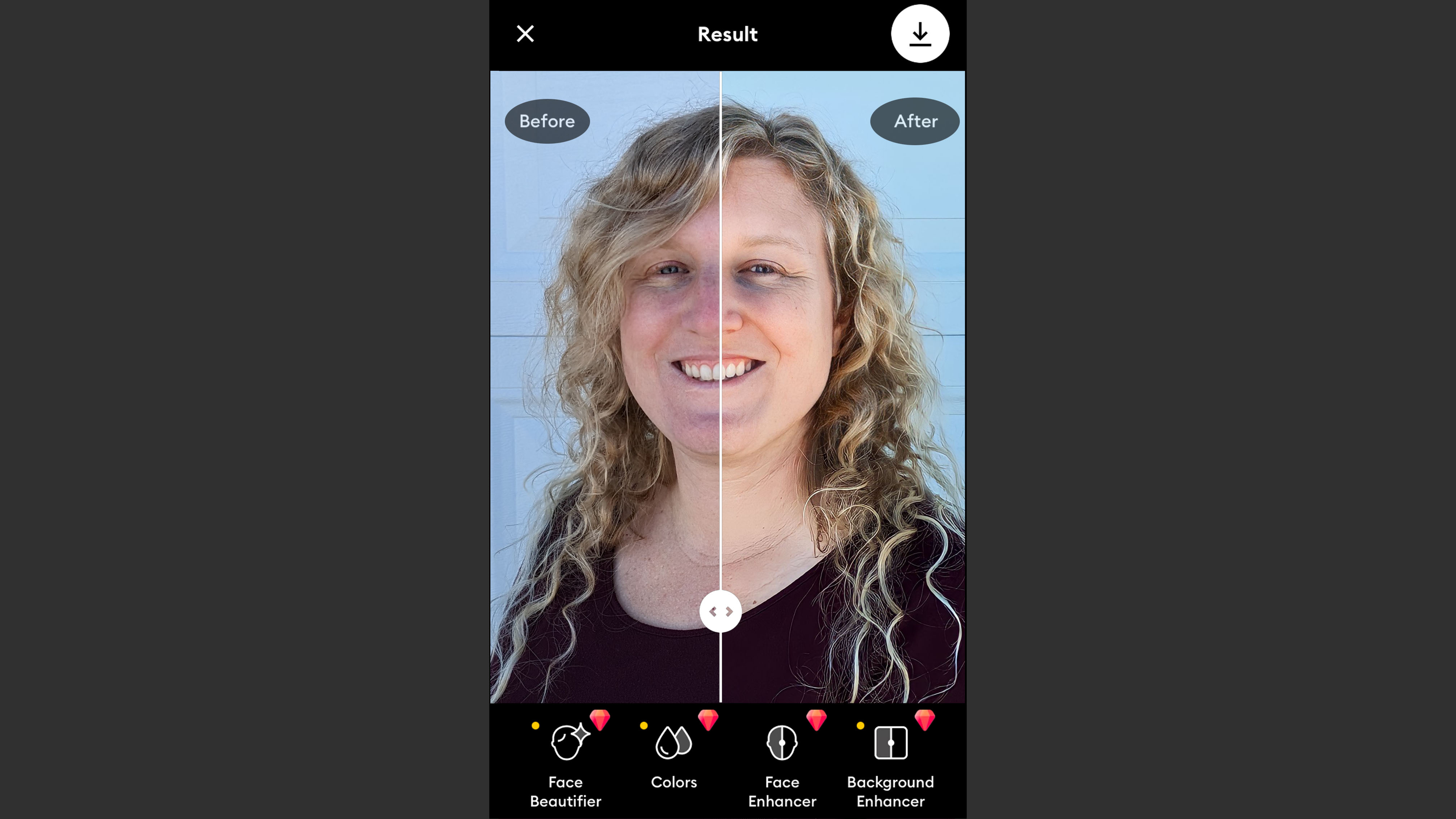Best AI image editors: pixel-perfection, every time
Make your photos look crisp and beautiful in just a few clicks.
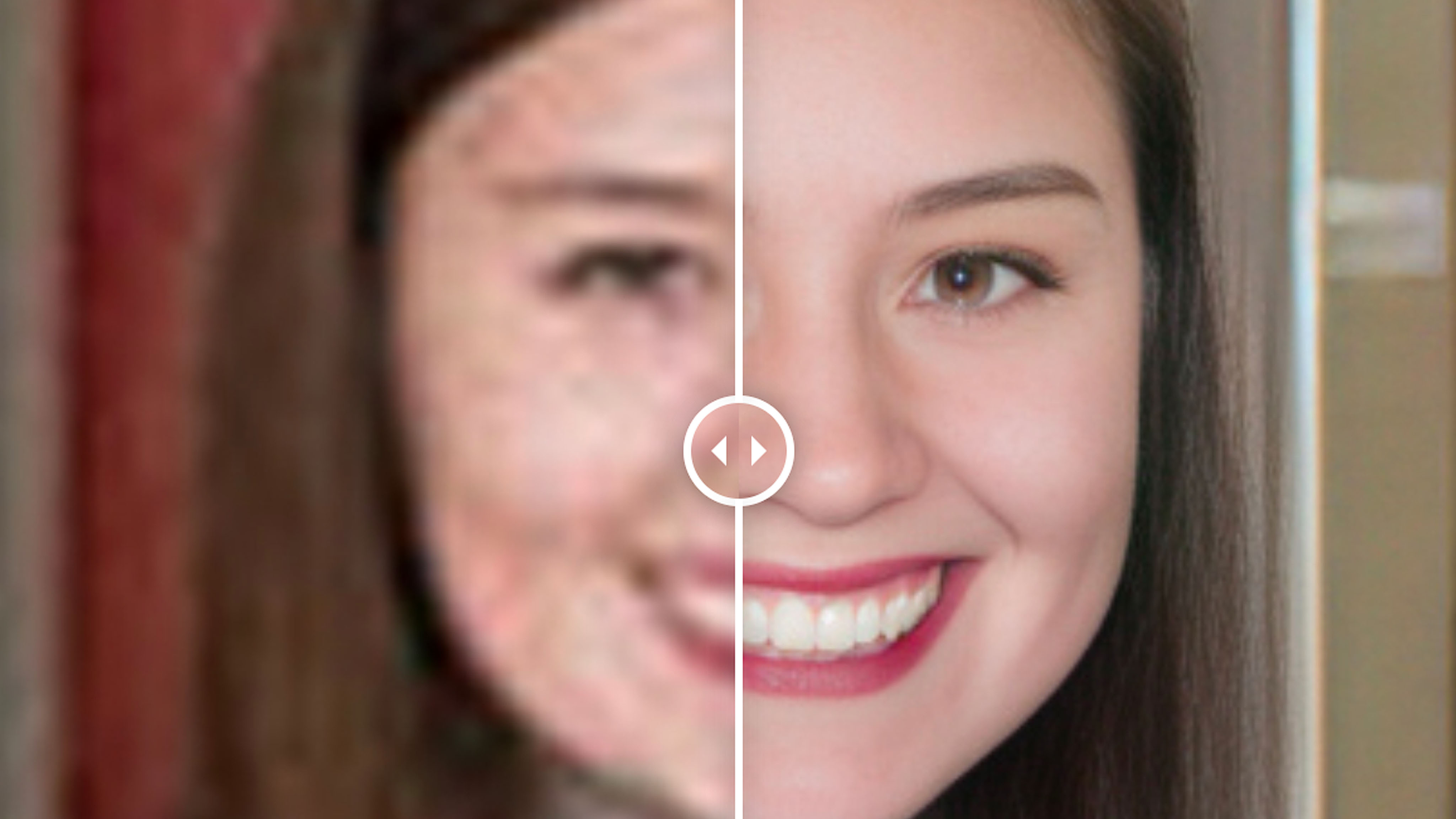
It's very frustrating when you get so close to taking the perfect picture only to realize that the image is blurry, the image is dark, a strange hue takes over the scene, or that there is something distracting in the background. In times like these, you might wish you had a magic wand that you could wave to correct any parts of your photos that didn't turn out right. Well, magic might not be real but AI photo editors are the next best thing.
Each of our picks for the best AI photo editors is a little different, but most allow users to improve the clarity of their work, enhance hues and colors, or even change elements of an image. Here are the very best AI photo editors that you can use today.
Note: Some free AI photo editors train themselves on the images that are provided by users and might even claim ownership rights of anything uploaded to them. Read the Terms of Service for each AI photo editor before using them to know if your images could be used for any other purposes.
Best overall: Gigapixel AI by Topaz Labs

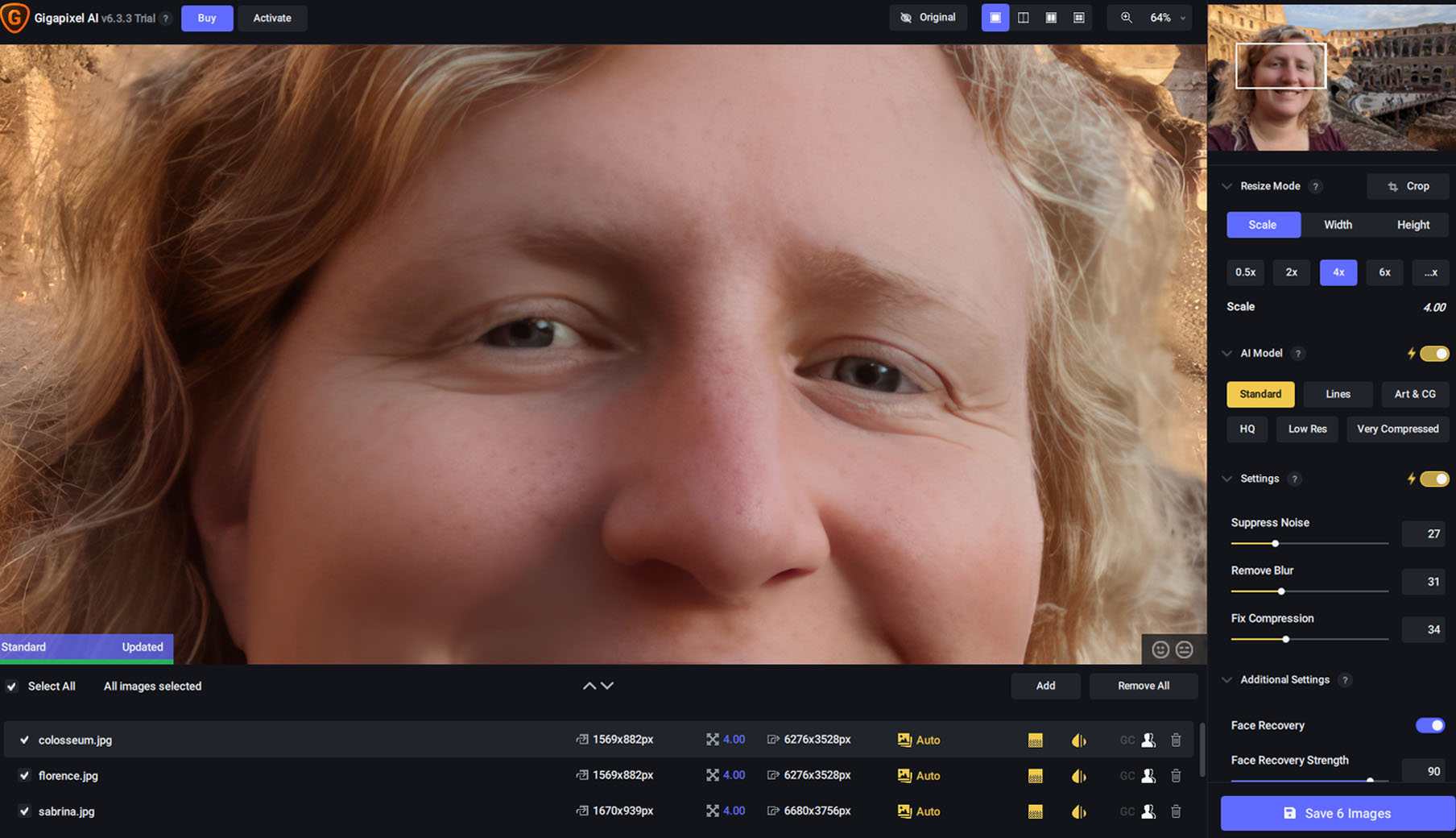
Gigapixel AI by Topaz Labs
Our expert review:
Reasons to buy
Reasons to avoid
While there are definitely more complex and professional-level AI image editors out there, Gigapixel AI by Topaz Labs is one of the most convenient and easy to use thanks to it being available on desktop and as a mobile app. The interface is relatively simple allowing newcomers to easily become acquainted with its abilities.
The good
Gigapixel AI is a very powerful AI upscaler that can add a lot of crisp details to your blurry images such as fine facial hair, individual fur strands, and believably textured skin. It can also be used to adjust exposure, hue, and other settings to get an image to look the way you want it to.
The program's layout is rather intuitive and there are several buttons that completely take care of edits with just a click. However, if you do want more control you can also manually adjust setting sliders to Suppress Noise, Remove Blur, and Fix Compression in your images.
To help make the software more effective, there are different AI models to choose from. For instance, the Standard model is good for your basic portraits while the HQ model works better with high-resolution technical images. The Lines model is ideal for upscaling architecture or text and the Art & CG model works best when enhancing non-photographed images like digital drawings. Meanwhile, the Low Res model is what you want when dealing with compressed images like older computer image files while the Very Compressed model is ideal for use on old scanned in images like family photos. Pick the model that works best in your situation and let the program make the desired changes to get it looking better.
To get the most out of it, you should consider looking at Topaz Labs' other programs: DeNoise AI, which is used for getting rid of distracting noise pixels, and Sharpen AI, which is great at focusing in on details. Together, these three programs can help you seriously upscale and enhance your photos.
The bad
There might not be any forced subscription plans like some other AI editor programs have, but Gigapixel AI is rather expensive with a one-time purchase of $99.99. That can be a lot to ask, but if you think you'll use it regularly then it could be worth it.
Another thing to keep in mind is that Gigapixel can sometimes take a long time to upscale an image or add other AI enhancements to images. Each time you zoom into the image it will need to process the image again until you save it. The more work asked of the software the longer it might take.
Best for professionals: Adobe Photoshop

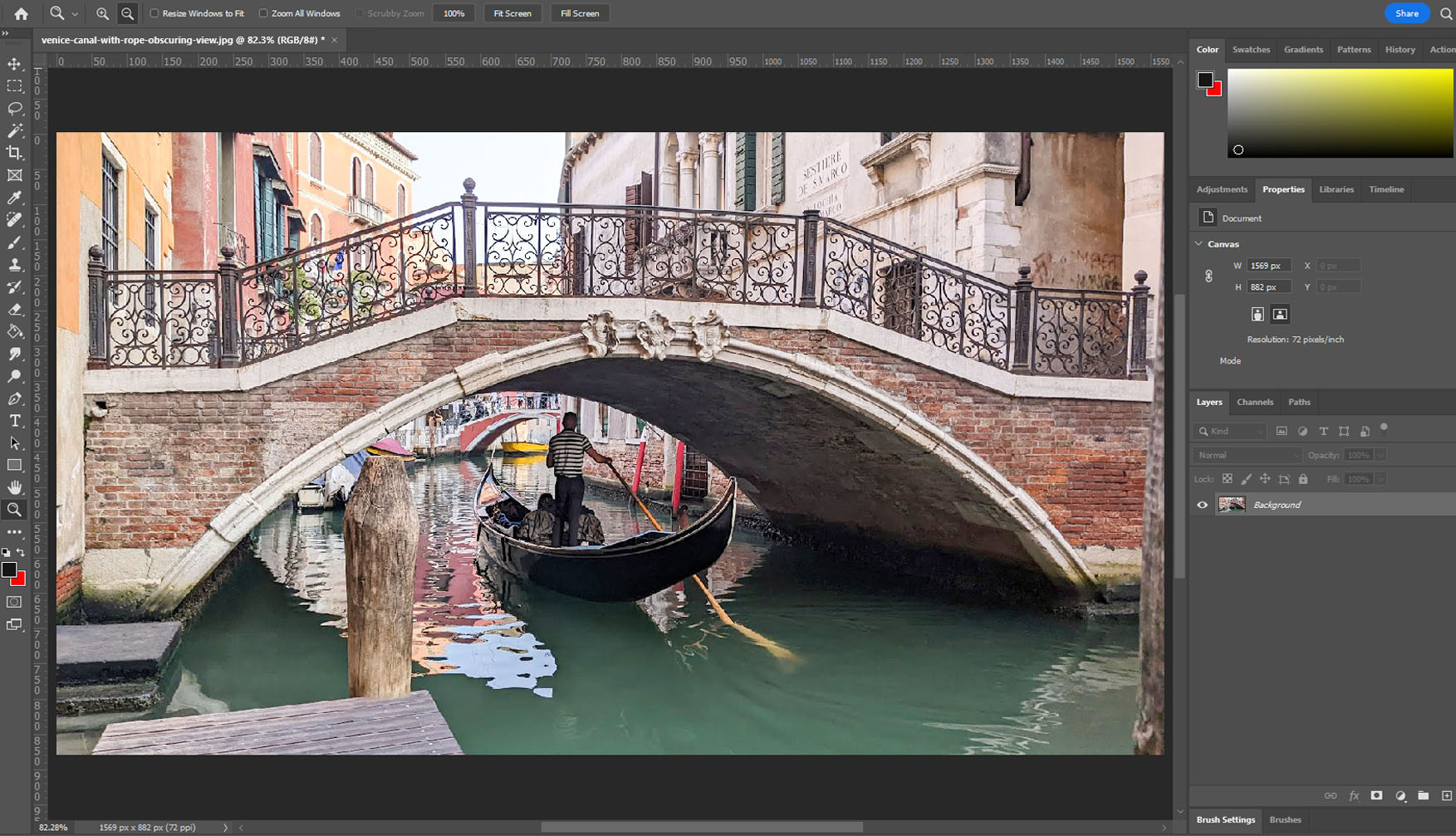
Adobe Photoshop
Our expert review:
Reasons to buy
Reasons to avoid
Adobe Photoshop has been the best professional photo editor for a very long time now and it's been able to easily keep its crown thanks to the many updates and AI-powered features it offers. It utilizes its powerful Adobe Sensei AI combined with machine learning features in order to identify parts of images, quickly swap sections out for others, and can even believably fill in empty sections or replace unwanted objects.
The good
Many professionals use Photoshop since it offers far more editing tools with plenty of minute control over photos. You can quickly sharpen or blur sections of the image, speedily identify sections of your image with the selection tools, apply preset filters, touch up skin blemishes, and much more.
There are also simple edits that can correct or fix photos in just a couple of clicks, like shifting the angle of someone's face or swapping out the drab sky for a more dynamic one. You can even set up batch processing actions to quickly edit multiple images at once so you don't have to do it all manually. One of Photoshop's most advanced features is Content-Aware Fill, which allows users to select a part of their images and believably remove it. For instance, if you took a picture of your dog at the park but there are distracting pieces of trash in the grass behind them, you could select these objects and then have the software delete and replace them with believable grass.
Since Photoshop is such a popular tool, there are hundreds if not thousands of useful plugins to help make it even more useful. For instance, the Stability AI plugin allows users to select areas of an image, add in a written prompt, and then allow the software to make the requested changes in just a few seconds. This can mean quickly adding fantasy elements to an image or even changing a woman's haircut to a believably different style. There's even a Gigapixel AI plugin if you've already purchased that upscaler software.
The bad
The biggest hurdle with Photoshop is the steep learning curve. Beginners can get very overwhelmed and confused when using Photoshop at first. It can take several hours of classes to really get a grip on the software. However, once an understanding is reached, users will be able to create and apply far more professional-looking edits to their photos. Since it's such a popular program there are thousands of tutorials online to learn from as well as an enthusiastic community to engage with.
Another deterrent for many people is the forced subscription. Several years ago, Adobe changed its flagship program plans so that there were no longer any one-time purchase options for it. The app on its own is $20.99 per month ($239.99 per year), which is a tall order for many user's wallets.
Still, Photoshop is the industry standard, and knowing how to use it can be very helpful in certain fields. If you ever think you'll go into a career that would benefit from using the software then it's a good idea to learn it.
Best beginner editor: Movavi Photo Editor
Movavi Photo Editor
Our expert review:
Reasons to buy
Reasons to avoid
Movavi Photo Editor is almost like a calmed-down version of Photoshop, but its designed to be more approachable. It's also significantly less expensive while offering plenty of editing and AI tools to help you perfect your images. You can check out the free trial to see if it fits your needs, but a watermark will appear on your images unless you pay for the program.
The good
Instead of presenting a busy window filled with several different tools, this program manages to keep everything rather minimalistic looking so you don't get overwhelmed. Tools are listed on the left sidebar and additional options become available at the top of the window when a tool is selected.
In addition to traditional manual editing tools, there are a number of AI features. One AI tool known as "Old photo restoration" allows you to remove markings and add color to older images with just one click. Another AI tool called "Retouching" cleans up portraits by getting rid of blemishes. You can also go in manually and remove blemishes with the healing tool if it misses anything. That way you can clean everything up and get it looking much more presentable.
Unlike Photoshop and some other photo editing apps, Movavi Photo Editor doesn't have a subscription. You can own it with a one-time purchase of $70, which is much less expensive than some competitors. Considering all of the helpful tools it provides, this is a good price.
The bad
If you're already familiar with photo editing programs then Movavi Photo Editor might feel a little limited. The tools aren't as powerful as Photoshop and you won't be able to have quite as much control since everything is simplified a bit. It also doesn't provide any super groundbreaking features. Still, it works very well and should fit most people's needs.
Additionally, Movavi might run slowly if multiple edits have been applied to an image, so be prepared to practice patience. Of course, the processing power of your Mac and the amount of space available will partially determine how well the program runs.
Best portrait manipulation: Luminar Neo
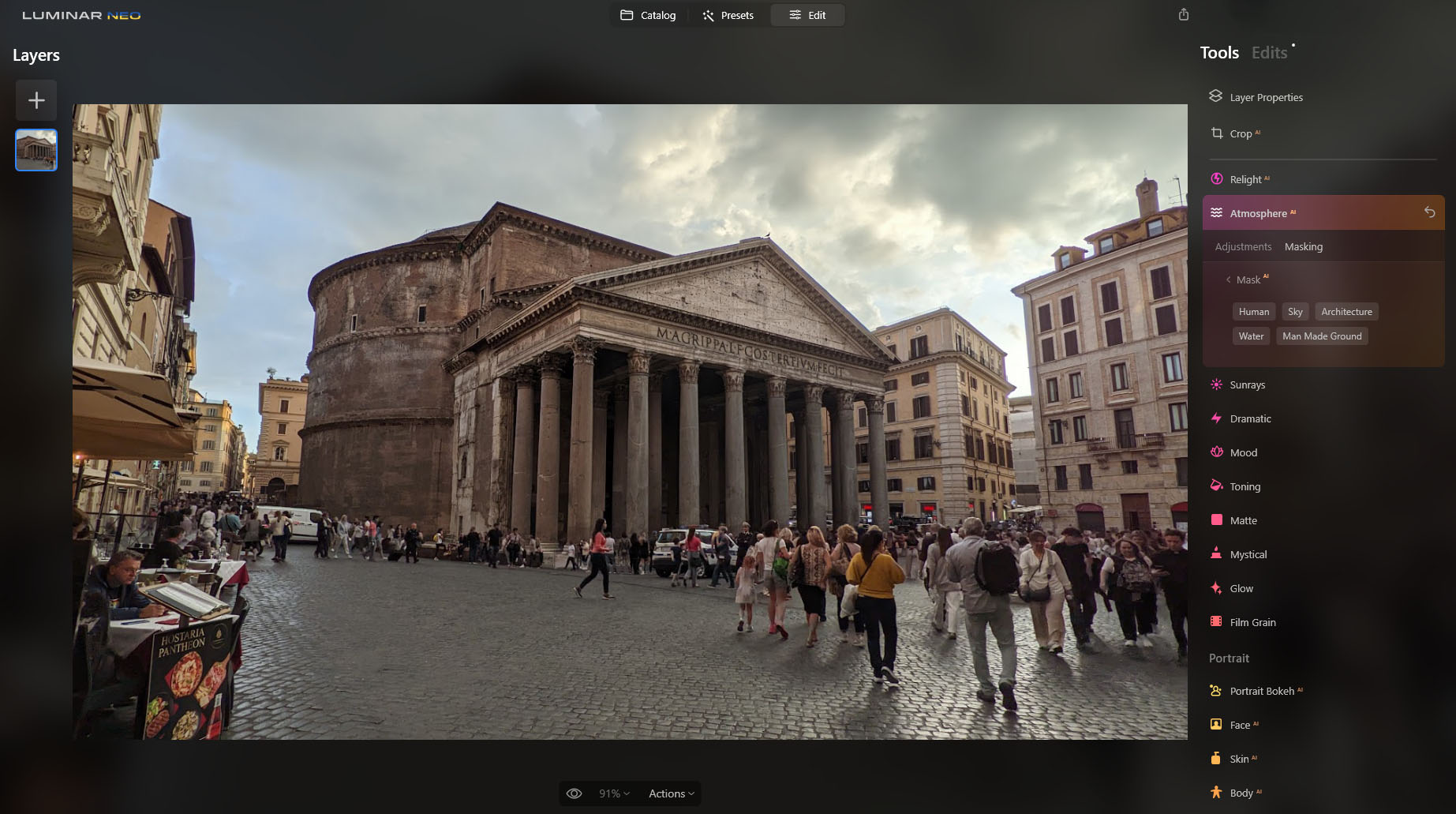

Luminar Neo
Our expert review:
Reasons to buy
Reasons to avoid
Where Photoshop's UI is designed around technical professionals, Skylum's Luminar Neo is designed to offer many of the same tools but with a much more welcoming interface. Its many unique AI features allow users to quickly improve their work by adjusting simple sliders.
The good
It's very easy to apply edits to specific locations in Luminar Neo without going to the tedious trouble of selecting things yourself. Just click on the button to initiate AI Masking and the software will analyze your picture and identify different parts like the sky, mountains, or a person. Select one of these AI Masks and then you can adjust things like highlights, hue, exposure, and shadows to get that part of the image looking perfect without affecting anything else.
Instead of having to deal with complex tools and multiple windows, Luminar Neo's tools are broken up into four sections: Essentials, Creative, Portrait, and Professional. Each has tools that will be helpful for the kind of project its named after. For instance, Portrait contains AI tools for creating Bokeh focus effects, smoothing skin, changing the thickness of a face, or whitening teeth. The software can even identify parts of the body and make changes, like changing the shape of someone's abdomen. All together, this gives people some of the best control in adjusting portraits with AI out of any program on this list.
Skylum also offers a much simpler program called Luminar AI, which behaves similarly to Luminar Neo, but doesn't have as many editing tools and features. However, if you're wanting a program that can help you apply elegant edits and effects in just one click then the simpler program might be what you want.
The bad
Lumar Neo users have a choice between two subscription plans (Explore for $10 per month or Pro for $99 per year) and a Lifetime one-time purchase option of $320. That's more than what a year's subscription to Photoshop costs you, but at least you won't be paying more after that.
Another thing to be aware of is that Luminar Neo can slow down considerably depending on how many edits have been applied to an image. The actual speed and efficiency of the software will depend on the processing power of your Mac.
Best free option: Remini - AI Photo Enhancer
Remini - AI Photo Enhancer
Our expert review:
Reasons to buy
Reasons to avoid
If you simply want a quick way to upscale your images and enhance textures without being too involved with the editing process then Remini is the program for you. It has a very simple layout and is ideal for improving portraits and landscape shots.
The good
Unlike some other AI photo editing options on this list, there is a free version of Remini that never ends. However, it is limited in that it only allows up to 15 free image edits per day, and most of the best editing tools are locked behind the paid subscription. The free version also requires you to sit through ads each time you upload an image or choose to download an edited one. However, if you simply want to occasionally improve image clarity and smooth skin in portraits then this free version can work out just fine. Of course, if you think you'll want to do more than 15 image edits per day, then you might need to consider the subscription.
Another thing that makes Remini so appealing to Apple users is that in addition to Remini online, there is a dedicated Remini iOS app, which works with compatible iPhones and iPads that run iOS 14.0 or later. You'll just have to make sure you have the 124.8 MB of space needed to download it.
The bad
There's no denying that Remini is a powerful and convenient way to upscale and add detail to photos. However, only being able to edit a limited number of photos per day with the free version is rather limiting. Unfortunately, the actual subscription for Remini is rather expensive at $9.99 per week ($190 yearly) for the Pro plan or $4.99 per week ($90 yearly) for the Lite plan.
Make your photos picture perfect
You can always trust iMore.
It isn't always easy taking the perfect photos. Oftentimes, we need to make tweaks, sharpen the image, or remove things we don't want to get a picture looking the way we want it to. Thankfully, photo editor programs that utilize AI can make the editing process a whole lot easier and more convenient.
Gigapixel AI is one of the very best programs for enhancing photos since the interface is laid out in an intuitive way and the controls are easy enough to understand without having to take a dedicated class. Allow the software to upscale your work and then make some changes using the simple interface.
Whether you want to widen an image and add believable filler or want to remove unsightly electric poles from a portrait, Photoshop can help give the most creative control with its healing brushes and Content-Aware Fill AI tools. It takes a steep learning curve to master, but you'll be able to get all of your images looking exactly how you want them to in the end.
iMore offers spot-on advice and guidance from our team of experts, with decades of Apple device experience to lean on. Learn more with iMore!

Gaming aficionado Rebecca Spear is iMore's dedicated gaming editor with a focus on Nintendo Switch and iOS gaming. You’ll never catch her without her Switch or her iPad Air handy. If you’ve got a question about Pokémon, The Legend of Zelda, or just about any other Nintendo series check out her guides to help you out. Rebecca has written thousands of articles in the last six years including hundreds of extensive gaming guides, previews, and reviews for both Switch and Apple Arcade. She also loves checking out new gaming accessories like iPhone controllers and has her ear to the ground when it comes to covering the next big trend.
